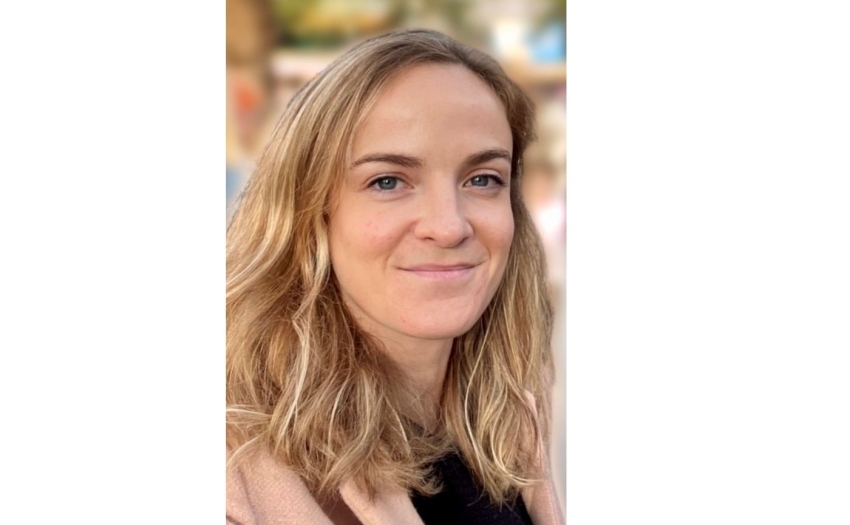News

INTERVIEW with 2022 G. COLONNETTI MEDALLIST, Dr. ELLINA BERNARD
Dr Ellina Bernard is a SNSF Ambizione fellow at Empa (Swiss Federal Laboratories for Materials Science and Technology), Switzerland. Dr Bernard is one of the two 2022 Gustavo Colonnetti medallists. She is a member of the recently established TC PEM Processing of earth-based materials. Her presentation titled “Cement and clay chemistry for the development of low embodied CO2 binders and their durability”, presented on Thursday 17 March 2022 during the 75th RILEM Anniversary webinar, can be found here.
21 March 2022
RILEM Implementation Manager (RIM): Good morning Ellina, are you still in Paris (Editor’s note: Ellina attended the First International Conference on Earthen Construction in Paris in person on 18 and 19 March)?
Dr Ellina Bernard (Ellina): Yes, only for a few more days.
RIM: You are no longer at the Imperial College, London, now. Aren't you?
Ellina: I am now affiliated at Empa and ETH Zurich in Switzerland. I started on 1st March 2022.
RIM: Rumours has it you will no longer work on cement but on earth-based materials, am I correct?
Ellina: Yes, I want to expand my horizons but I will still work on degradation of cement and cementitious materials, as I suppose I have some knowledge on cement chemistry to be put on good practice... But, yes, I got some funds to work on earth-based materials.
RIM: It was a grant that you wrote as PI (Principal Investigator)?
Ellina: Yes! I think it started from my work on magnesium-based materials and the lack of research and understanding on this topic... And the main point is that we need to do fundamental work in order to design more sustainable construction materials, and earthen materials have, among other, interesting potentials.
RIM: The last slide of your Colonnetti medal presentation mentioned “A future for Mg-cementitious phases in the construction industry? Definitively!”
Ellina: The magnesium silicate hydrate (M-S-H) phases, which I had been studying during my PhD, present big similarities with clay materials, so I thought that maybe we can used them as additives to earthen materials, and this is why I think there is a lot of potential for this type of cement. I decided to give more emphasis to Mg-cementitious phases in my Colonnetti presentation (Editor’s note: the presentation is titled “Cement and clay chemistry for the development of low embodied CO2 binders and their durability”, and it was presented on Thursday 17 March 2022, during the 75th RILEM Anniversary webinar) in order promote the research for Mg-cementitious phases and their uses.
RIM: In less than a week, it collected 42 viewers on YouTube (Editor’s note: as for today, the video has 126 viewers)! RILEM Technical Letters will also publish a paper authored by you on this subject. The research is out there and spread! On this regard, I have 2 questions; the first one is: how would you explain in very simple words your research?
Ellina: I try to understand which are the precipitating phases when Mg is involved, either in degradation of Ca-based cementitious materials, Mg-based cements, and more recently, in Mg-based cement used as additives in earthen materials. I study the range of compositions and their volume stability, and therefore my research tackles the hardening, the mechanical performance and the durability of such construction materials. And there is a lot to do because there is so little research done so far compared to what has been done for calcium-based cement.
RIM: What about the process of making this cement?
Ellina: It depends! At the moment we use carbonated materials, aka MgCO3, that we can burn, and this process is not sustainable as we, similarly to Portland based cement, release CO2 in the atmosphere. But if we think about magnesium-based cement obtained from magnesium-silicate rocks, the process could be more sustainable.
RIM: It is now time for my second question: when and how the idea of applying your knowledge and know-how to earthen-based materials came to your mind?
Ellina: It was before my time at Imperial College London. I was still at the University of Bern, Switzerland, and this is when I initially started to move towards clay materials. At that time I was studying the interface between clay and cement and learnt a lot about clays. This made me realize that some magnesium-silicate binders have different properties than the ones of Portland-based cements and that the precipitation of small amount of precursors of hydrated clays would be interesting for the integrity of the earthen materials. But right now, it's more a concept and not yet applicable.
RIM: Who is funding this project?
Ellina: The Swiss National Science Foundation (SNSF); it is an Ambizione fellowship scheme founded for 4 years.
RIM: Fantastic! Congratulations!
Ellina: Thank you! Is also great to be back at Empa, a unique institute with excellent mentors, facilities and work environment. I am also grateful for the different places I had been staying in between. I learned a lot and continue to collaborate with the different institutions.
RIM: Some of your supervisors are very active RILEM members, but it seems that you only joined RILEM this year? How come?
Ellina: I remember during my PhD times all these people attending a RILEM committee and telling myself “This must be very interesting. One day I will go there too”. But I needed to work and study. Also during that time I was more involved in the research community related to radioactive waste, and there were no TCs on magnesium-based cements.
RIM: There is now a TC on a similar topic: 284-CEC : Controlled expansion of concrete by adding MgO-based expansive agents taking the combined influence of composition and size which was established in 2018.
Ellina: Yes, it was established after I finished my PhD and is related to a topic quite different from what I am doing. I worked all my time in Bern on degradation of Portland-based cement. I think the degradation topic is more interesting for people in RILEM as I see there are many TCs working on degradation of cement, chloride diffusion, etc... There is, since recently, some focus on the magnesium containing phases precipitating. I used and use a lot the work of these RILEM TCs. Although they were not directly focusing on magnesium, there is a huge amount of data that I find very useful.
RIM: Was this your first time applying for the Colonnetti medal?
Ellina: Yes, my mentors from Empa suggested that I could apply. They also suggested that there are currently no TCs on Mg-based cementitious materials in RILEM, but we could think of starting one in the future.
RIM: It means that you will continue to work on this topic even though now your main research project is on earthen-based materials… and this is the reason behind your attendance of the “First International Conference on Earthen Construction” held in Paris in conjunction with the 2022 RILEM Spring Convention. Three new TCs on earthen construction have been approved in March. Are you going to join one of them? All of them? What is the plan?
Ellina: I attended some meetings already and most likely I will be joining one or two of these TCs. I look forward to being more involved in RILEM and working with great colleagues all around the world.
RIM: I see you have been quite active as a reviewer of Materials and Structures.
Ellina: I have never published before in Materials and Structures as I was focusing more on geo-chemistry and worked on the study of single phases. But I finally came into testing some binders and mechanical performance so now a part of my research fits better to the aims of the journal.
RIM: One last question: what is your educational background?
Ellina: I am actually a civil engineer. In France we need to study some intensive mathematics, physics and chemistry in the first two years of your bachelor’s degree. My major during that time was in chemistry, but I ended up graduating as a civil engineer.
RIM: Great! Thank you, Ellina, for this chat!
Ellina: Thank you.

 6
6












No comment
Log in to post comment. Log in.